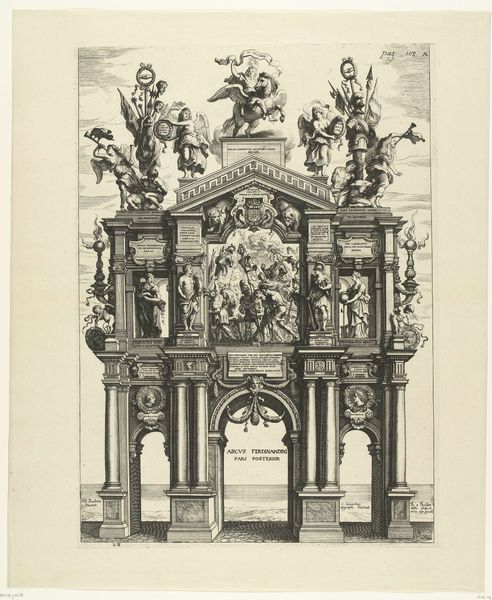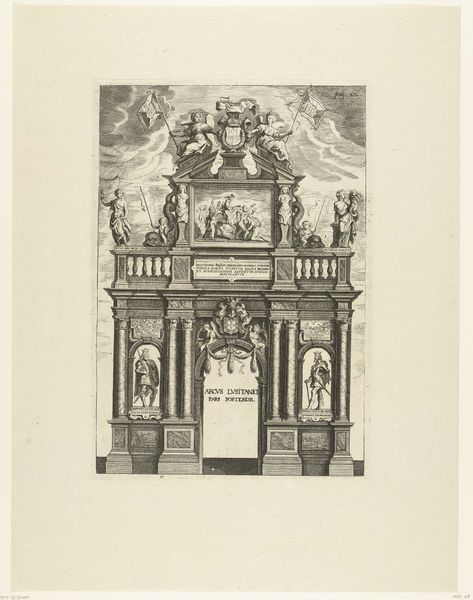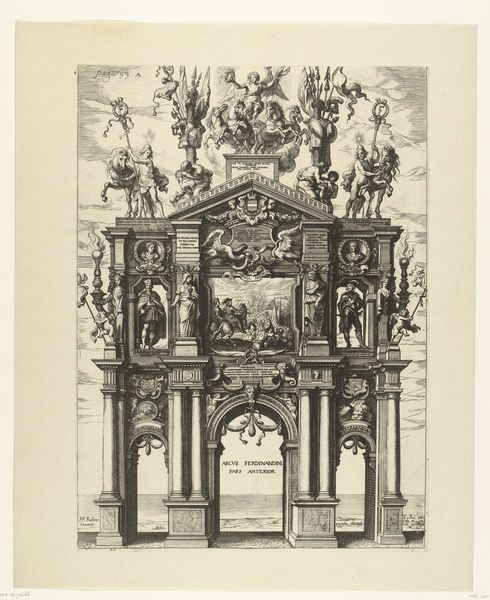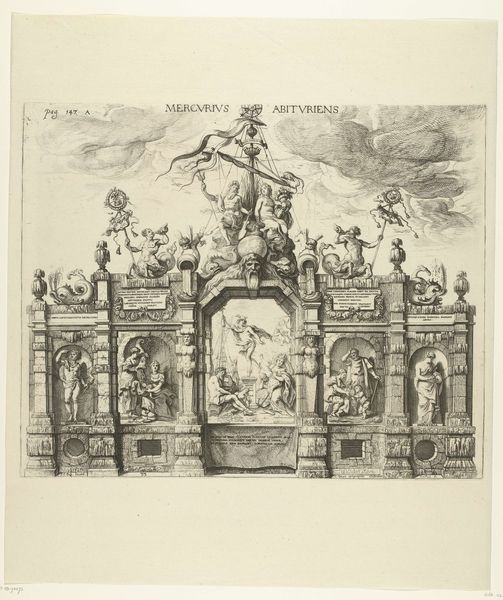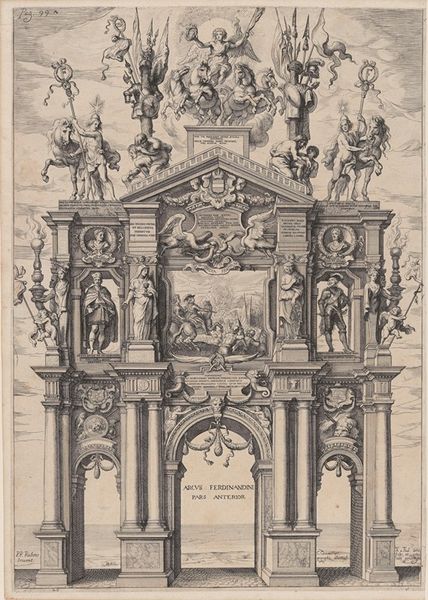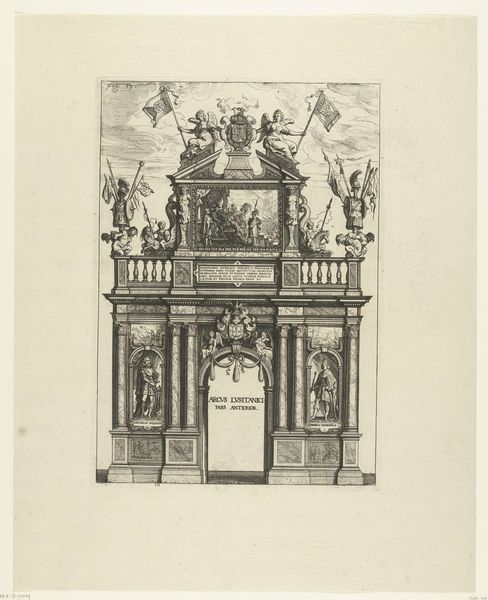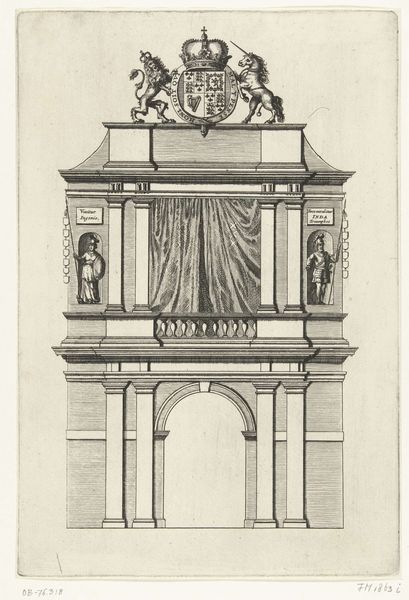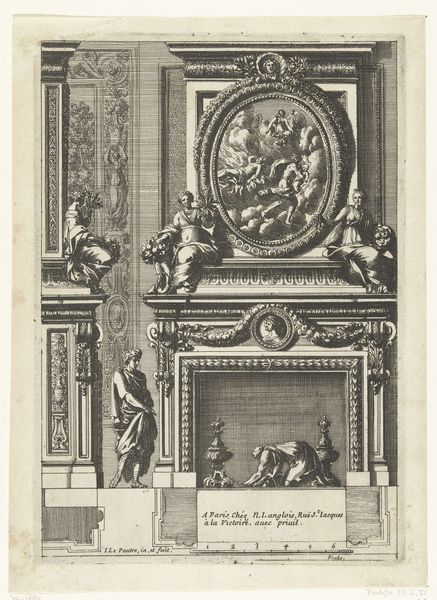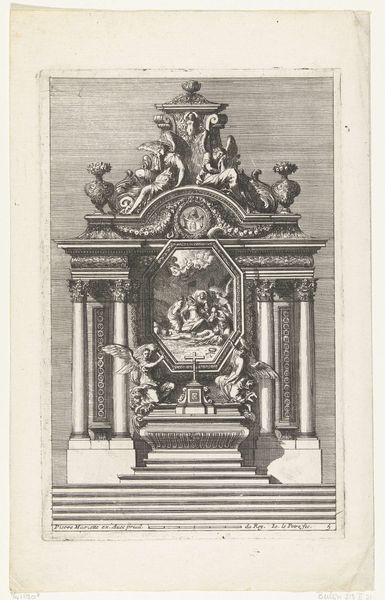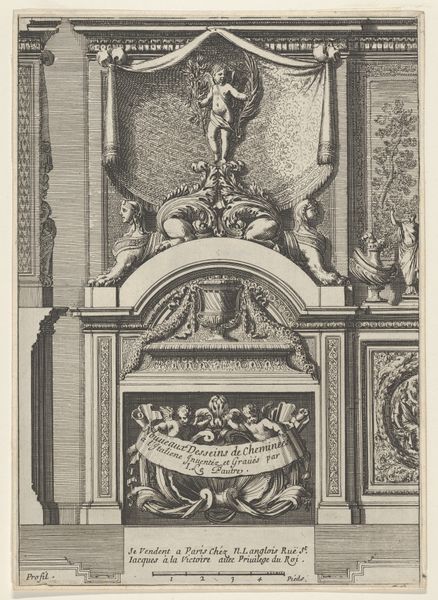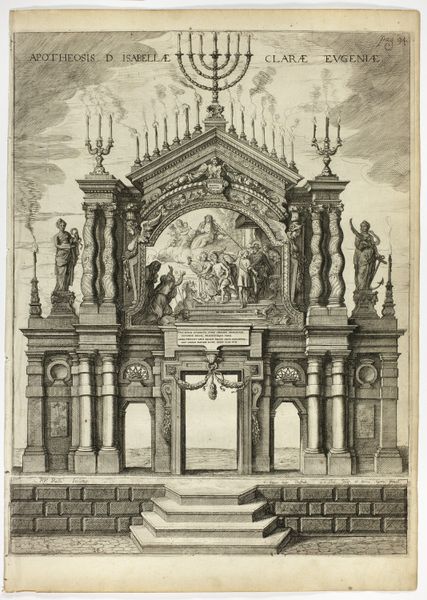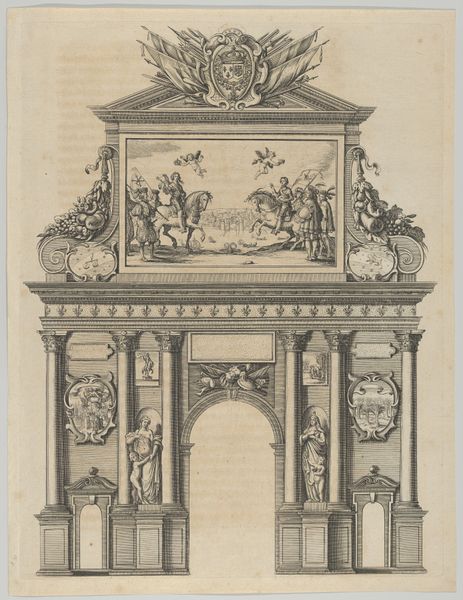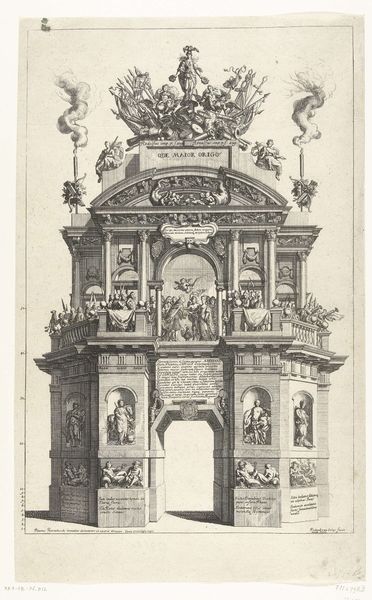
Triomfboog bij de Sint-Michielsabdij (voorzijde); intocht van Ferdinand te Antwerpen in 1635 (nr. 37) 1639 - 1641
0:00
0:00
print, engraving, architecture
#
narrative-art
#
baroque
# print
#
old engraving style
#
form
#
line
#
cityscape
#
history-painting
#
engraving
#
architecture
Dimensions: height 498 mm, width 314 mm
Copyright: Rijks Museum: Open Domain
Editor: This is Theodoor van Thulden’s "Triumphal Arch near the Abbey of St. Michael," a print dating from 1639-1641. The detail is astonishing! It's like a photograph but with all this baroque drama built into a cityscape. What strikes you when you look at this print? Curator: It’s fascinating to see how Van Thulden uses printmaking to translate the spectacle of power. Triumphal arches, like this one built for Ferdinand’s entry into Antwerp, were deliberately designed as temporary structures to shape public perception. This print, therefore, serves as both a record and a form of political propaganda, disseminating the image of a powerful, benevolent ruler far beyond the event itself. Consider how the architectural details and allegorical figures reinforce specific narratives of conquest and legitimacy. What do you make of the choice to immortalize it in print? Editor: I see your point. The print transforms something ephemeral into something lasting. It suggests the ruler's power extends beyond just the moment of entry. Was this common practice? Did prints function almost like the Instagram of the 17th century, disseminating specific carefully crafted images? Curator: That's an insightful analogy! Yes, prints were a vital tool for disseminating information and shaping public opinion in the early modern period. They circulated images of rulers, battles, and allegorical scenes, solidifying political narratives and reinforcing social hierarchies. Furthermore, who would have purchased or commissioned this print and what does that say about how art plays into power and class? Editor: So the power isn't just in the arch itself, but in how it was reproduced and shared. Thinking about prints as an early form of mass media changes my perspective entirely. It shows how art and politics have always been intertwined! Curator: Exactly! It highlights the role of art in constructing and perpetuating dominant ideologies throughout history, which continues to this day. A useful way to analyse any artwork.
Comments
No comments
Be the first to comment and join the conversation on the ultimate creative platform.
